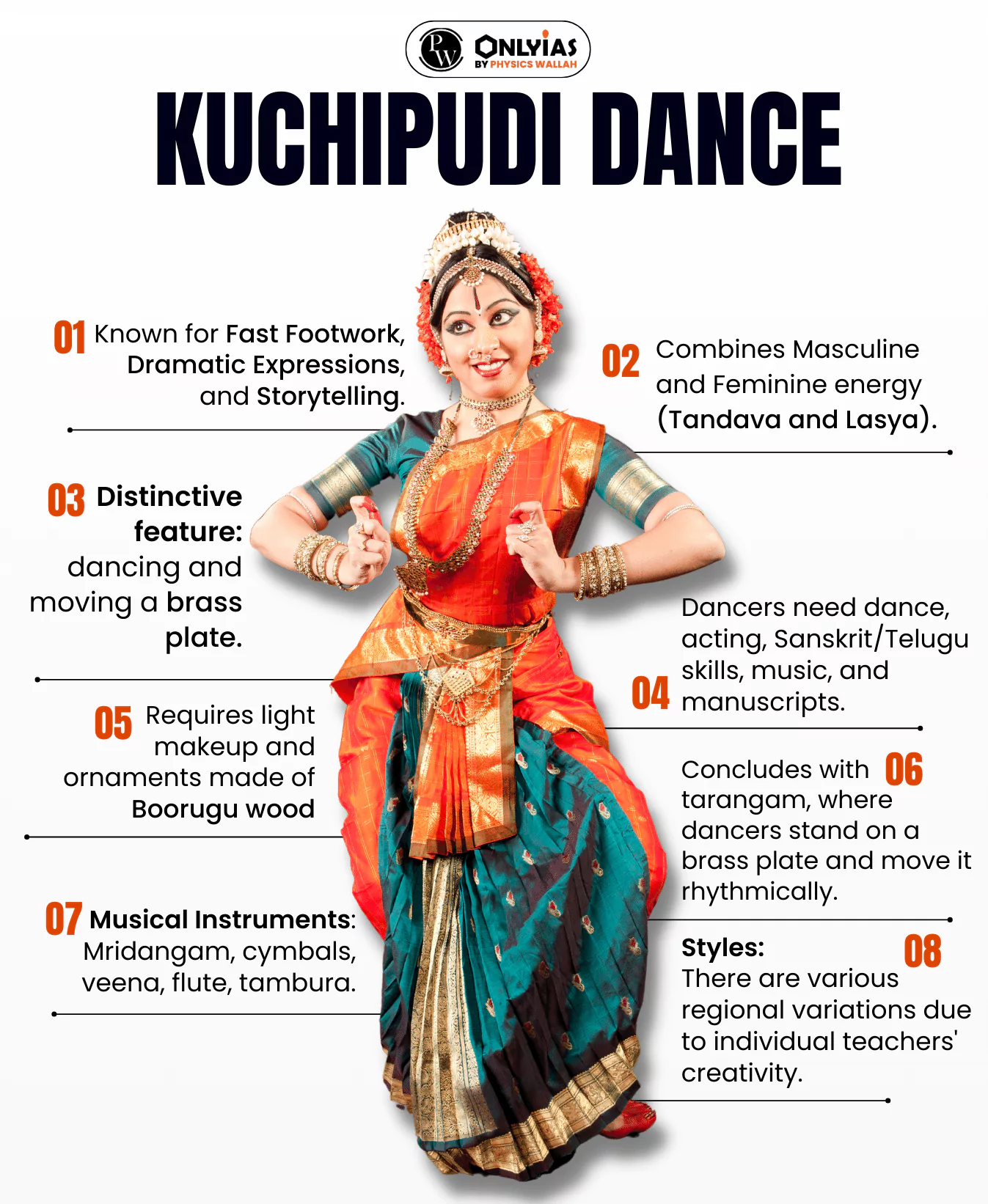Context:
Pendyala Lakshmi Priya, a Kuchipudi dancer, will receive Pradhan Mantri Rashtriya Bal Puraskar from the Indian President.
About Kuchipudi Dance
Kuchipudi is a dance-drama rooted in the ancient Hindu Sanskrit text Natya Shastra. It evolved as a religious art associated with traveling bards, temples, and spiritual traditions, similar to other classical dances in India.
Origin of Kuchipudi Dance
Kuchipudi originated from Andhra Pradesh, where it grew largely as a product of the Bhakti movement beginning in the 7th Century AD.
- In the 17th century, the present Kuchipudi style was conceived by Siddhendra Yogi, a Vaishnava poet.
- Its evolution can be traced to traditional dance – drama, known under the generic name of Yakshagaana.
Kuchipudi Dance: Features, Styles, and Musical Instruments
- Known for fast footwork, dramatic expressions, and storytelling.
- Combines masculine and feminine energy (Tandava and Lasya).
- Distinctive feature: dancing and moving a brass plate.
- Dancers need dance, acting, Sanskrit/Telugu skills, music, and manuscripts.
- Requires light makeup and ornaments made of Boorugu wood.
- Concludes with tarangam, where dancers stand on a brass plate and move it rhythmically.
- Styles: There are various regional variations due to individual teachers’ creativity.
- Musical Instruments: Mridangam, cymbals, veena, flute, tambura.

Kuchipudi Dance
Format of Kuchipudi Dance
- It follows 3 categories – Nritta (pure dance), Nritya (expressive dance with hand gestures), and Natya (drama).
- Begins with invocation to Lord Ganesha, character introductions, and pure dance.
- Followed by expressive dance (Nritya) with storytelling through hand gestures.
- Kuchipudi performance includes a Sutradhara or Nattuvanar.
- He is the conductor of the entire Performance.
- Kuchipudi dance is accompanied by Carnatic Music.
- Today, Kuchipudi is performed either as a solo, duet or a group presentation, but historically it was performed as a dance drama, with several dancers taking different roles
About Pradhan Mantri Rashtriya Bal Puraskar
- PMRBP awards are given to children with exceptional abilities and outstanding achievements.
- Eligibility
- Age Limit: 5 – 18 years child who is an Indian Citizen and lives in India.
- The achievement should show lasting dedication and effort.
- Categories of awards: Bravery, Art & Culture, Environment, Innovation, Science & Technology, Social Service and Sports
- The Ministry of Women and Child Development implements this scheme.
|
News Source: All India Radio
![]() 22 Jan 2024
22 Jan 2024

